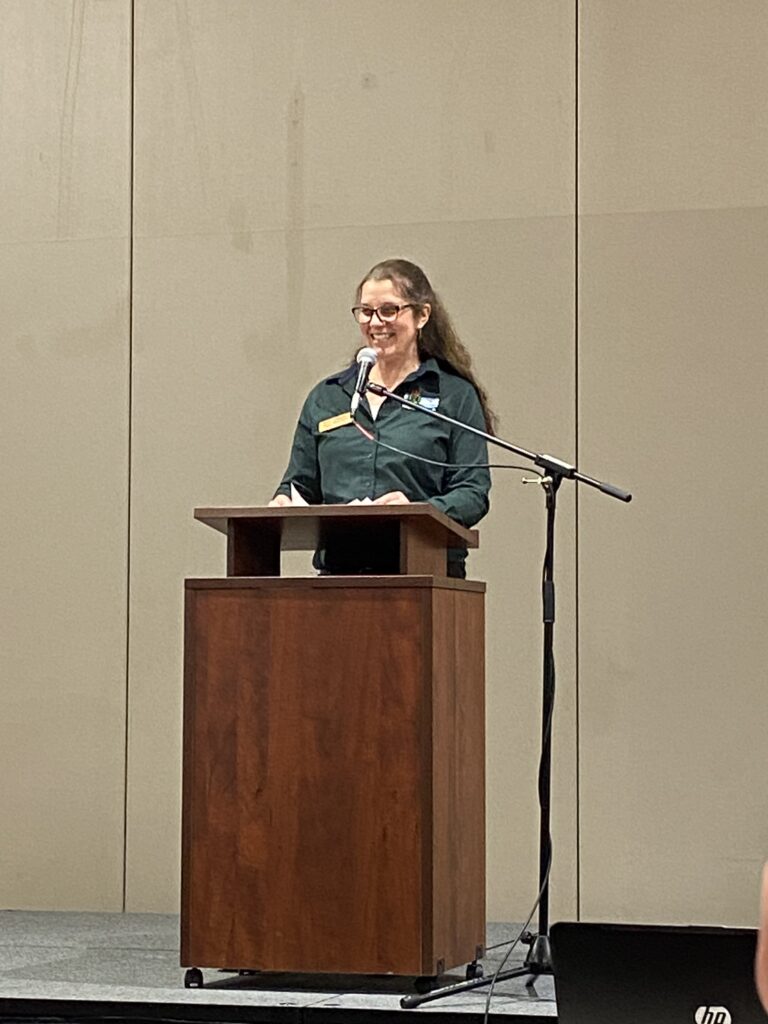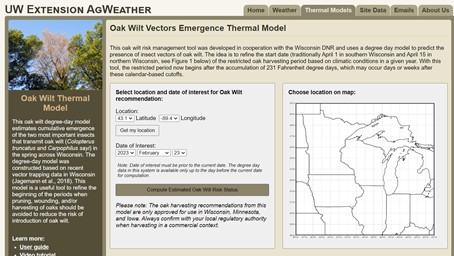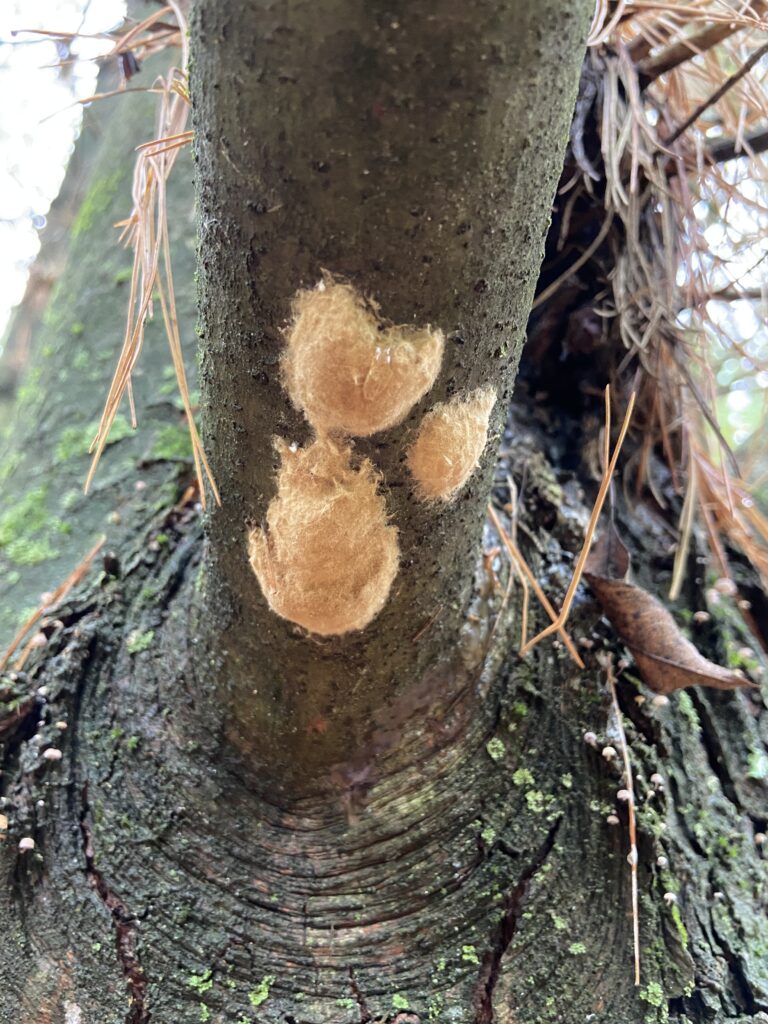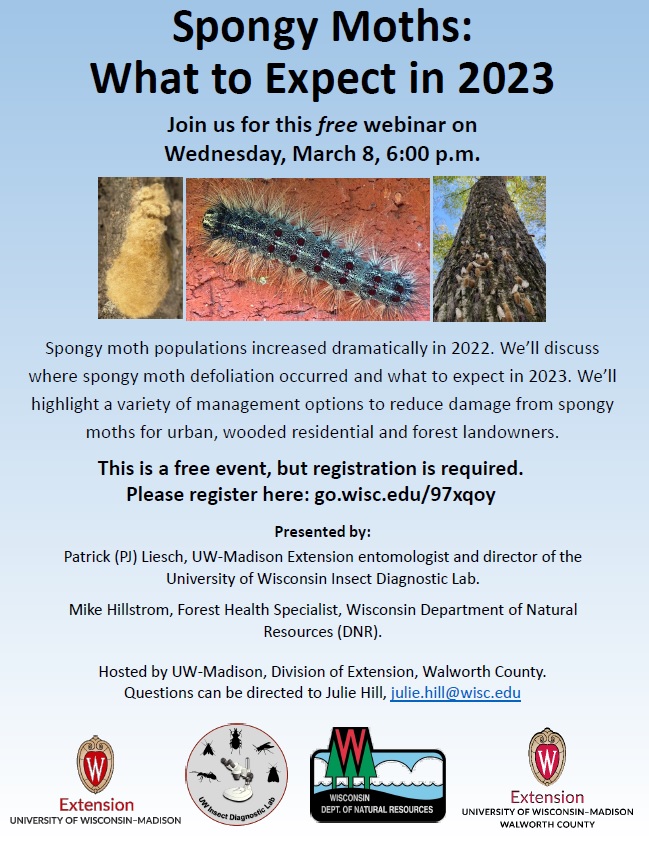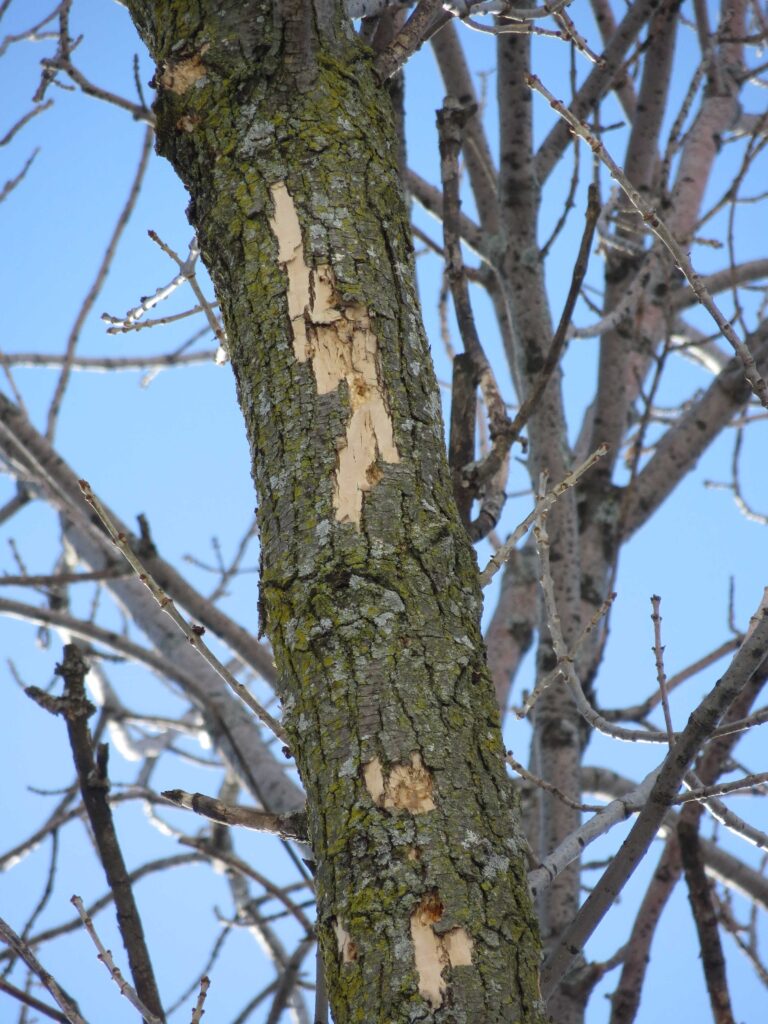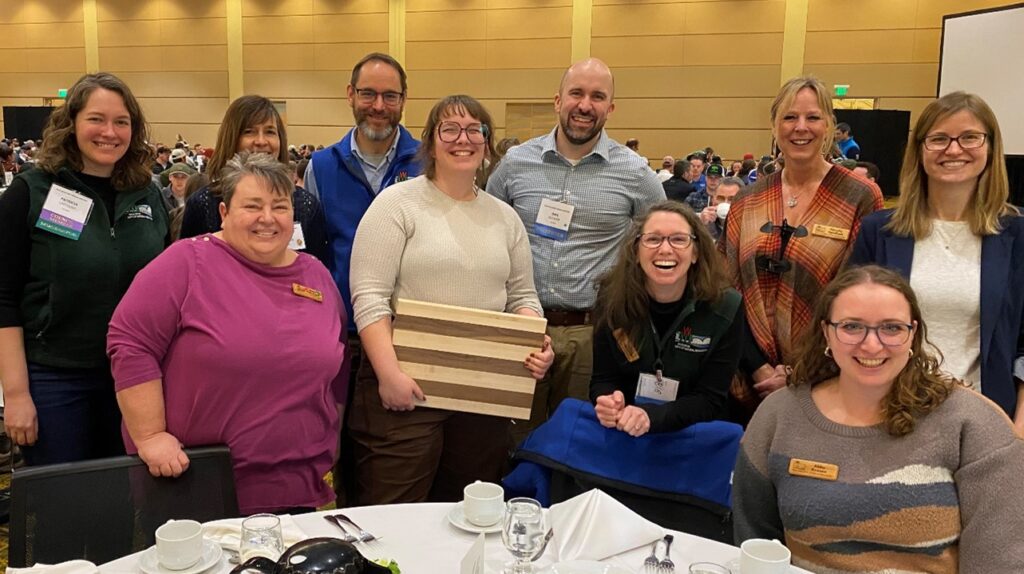
Most of the UF Team (missing Jeff Roe). From left to right in the back row: Patricia Lindquist, Kim Sebastian, Brian Wahl, Dan Buckler, Nicolle Spafford, Laura Buntrock. Left to right in the front row: Tracy Salisbury, Kirsten Biefeld, Olivia Witthun, Abby Krause.
Kirsten Biefeld’s last day as an Urban Forestry Outreach Specialist and Wisconsin Urban Forestry Council Liaison was Friday, Feb. 24. You may recognize her through the Urban Forestry newsletter posts and similarly related social media posts and at conferences since June 2022.
Starting Monday, Feb. 27, she will be a Plant Pest Public Information Specialist with the Department of Agriculture, Trade and Consumer Protection (DATCP). Here, she will help with the Spongy Moth survey and spray program, as well as helping with furthering outreach and education endeavors about Wisconsin’s forest pest populations.

